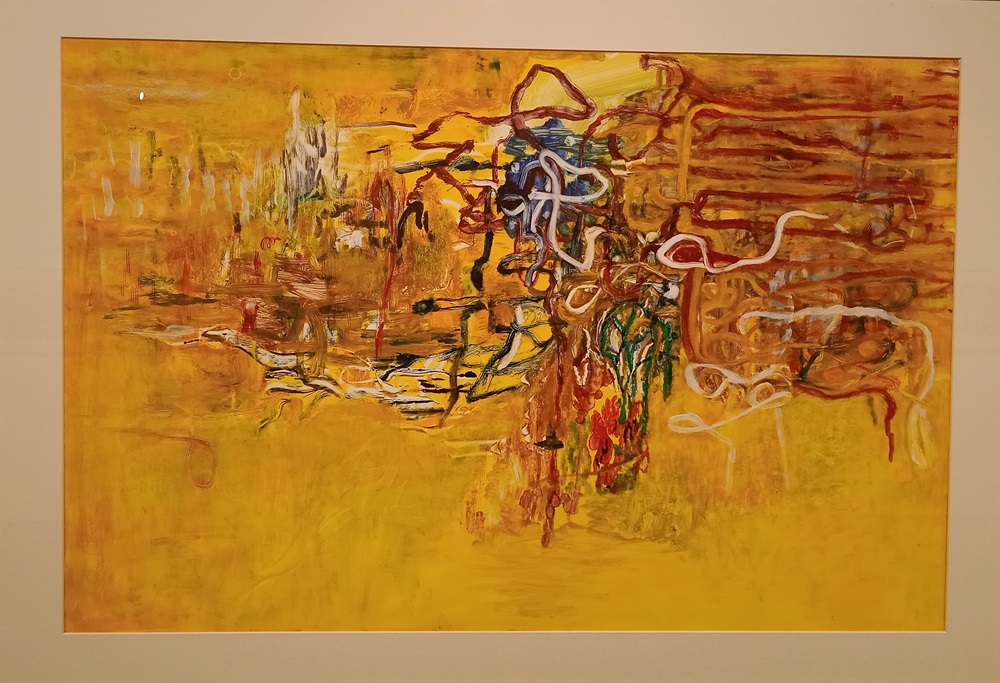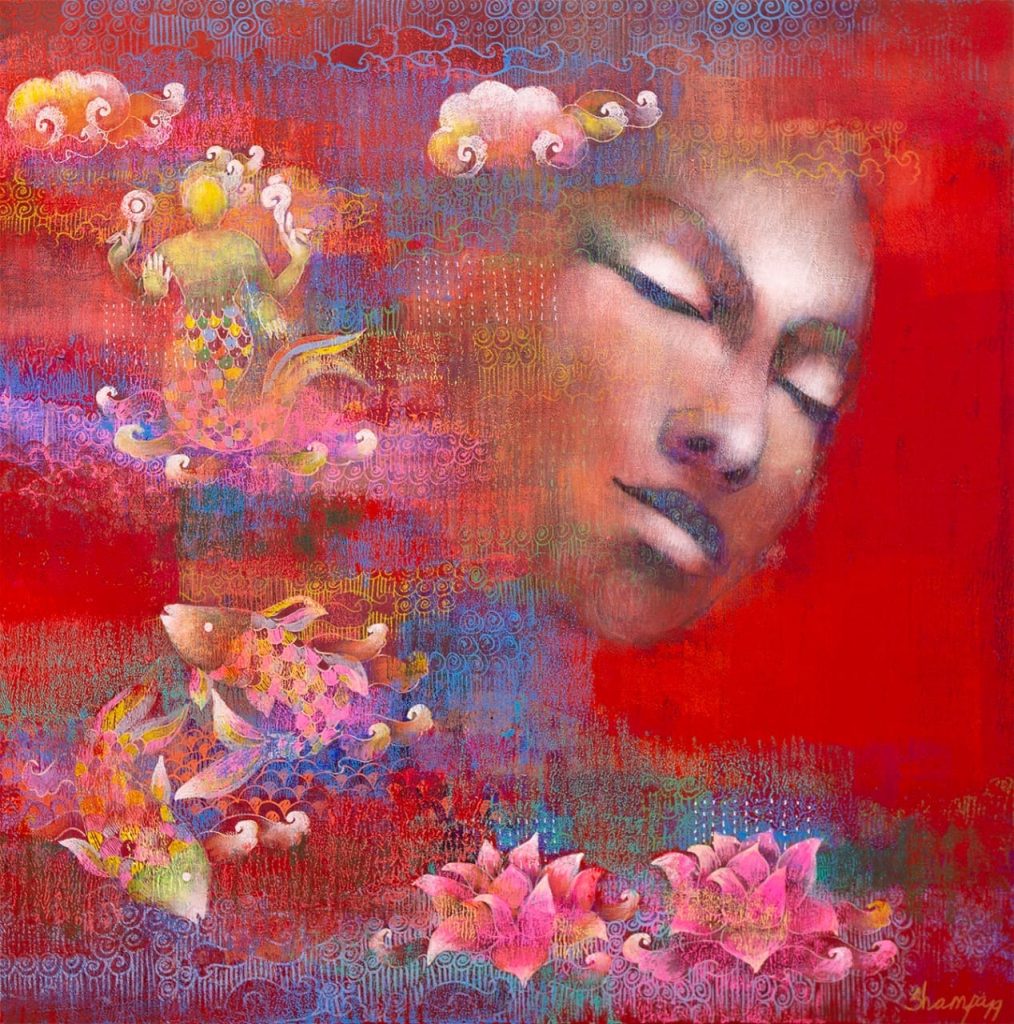Before launching an exhibition at Bikaner House, Indian-born American artist Tara Sabharwal talks about her creative process in a video shared on social media. When we look at Tara’s paintings, which are on exhibit at Bikaner House, we can see how she explores the confluence of psychology and spirituality beautifully and abstractly. Tara discusses her practice and psycho-spiritual components in that video.
Psycho-spiritual art, as it is known, is a genre that examines the relationship between spirituality and psychology. It explores the depths of the human psyche, feelings, and spiritual experiences, frequently aiming to provide a clearer picture of the self and the interdependence of everything. To produce works beyond the mere level of visual beauty, artists in this genre may find inspiration in various spiritual traditions, psychological theories, and personal experiences. Expert painter and printmaker Tara is renowned for her vibrant, delicately layered paintings. She now showcases her most recent works, combining artistic storytelling and abstract language.
Tara Sabharwal often uses common impressions and expressions straight from nature to communicate universal thoughts and issues that speak to the experience of all people. In addition to the typical domain of imagination, these symbols may originate from nature, dreams, fiction, or the symbolic language of the artist. More than anything, the imprint of the flowers, net, rope or web that make us ‘human’ in mundane life plays a game of abstraction in Tara’s paintings. Many tiny things are a part of Tara’s paintings; they are the creators of abstraction in this artwork. These paintings may serve as a visual diary of the artist’s exploration of the self and the spiritual dimensions of life within a time and beyond.
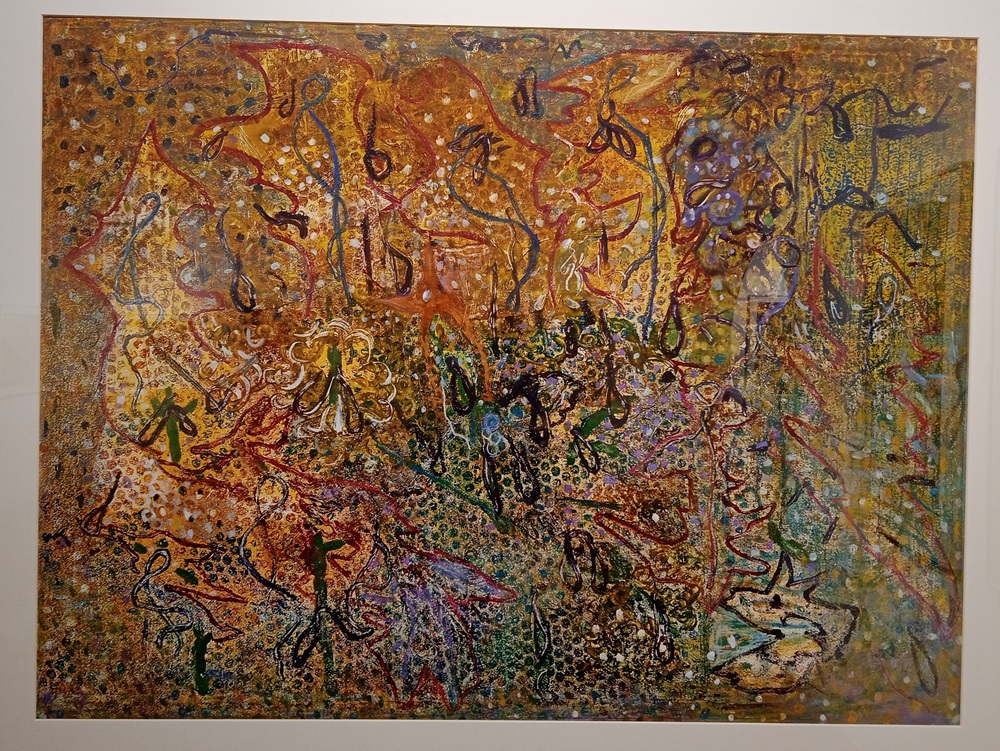
Artists may investigate the relationship between the mind and body, looking into the physical and visual manifestations of feelings, ideas, and spiritual experiences; this could represent space between emptiness, the material world of daily life, or the circulation of energy through the actualities and abstracts. Through abstract representations, ethereal landscapes, or surreal images, Tara Sabharwal’s paintings may generate a sense of mysticism and transcendence, inviting viewers to consider the mysteries of existence and the nature of consciousness.
Tara Sabharwal’s paintings frequently aim to close the gap between spiritual perception and psychological comprehension. It might examine spiritual ideas like enlightenment or higher consciousness alongside psychological theories like the unconscious mind. No one can classify Tara Sabharwal’s paintings as Psycho-spiritual art; those paintings go beyond categories and carry us into a realm of art experience: a world of submerged bodies of reality and abstraction. Shapes will find out the root of the shape and forms and are intended to be formless in visual experience; nothing has any structure in this painting.
Art of Abstract Art
We know the art form known as abstract art rejects the idea of accurately capturing the visual world. Instead, abstract artists create their desired impact with shapes, colours, and gestural marks. Since abstract art frequently depends on personal interpretation, its meaning can be wide-ranging and subjective. Tara Sabharwal’s painted world invites us into a unique visual experience that we can interpret in our own way and fashion. We may or may not be wondering why the artist mentioned her vivid dreams in the exhibition space, not only in visual but also in textual format.
The exhibition’s title, ‘In the Forests of the Night, ‘ comes from a William Blake poem titled The Tyger. Tara mentions a dream of walking in the forest in her dream collections. In this show, the exhibited paintings are remarkably tied to the artist’s dream, realities and life.
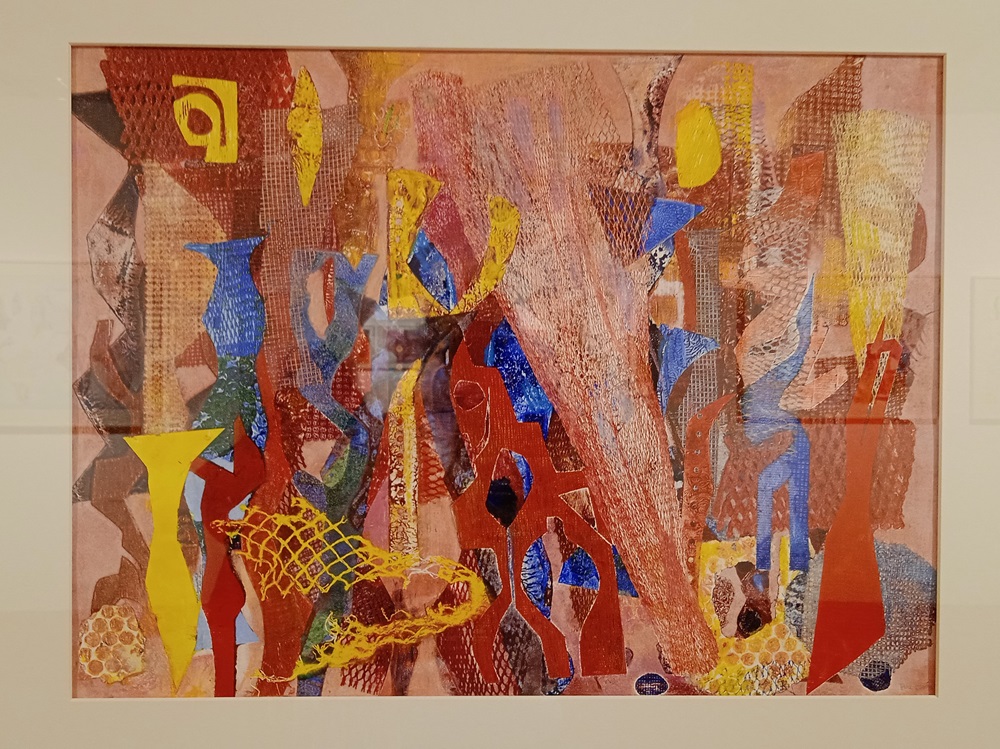
Why is the night in the forest a matter in an art show? Any significant difference between the night of urban and rural, in a dream and the forest. The forest in the night is more visual than anything, as William Blake called the tiger ‘burning bright’ in the woods—a tiger with burning bright in his body and soul moving toward us. We didn’t see anything that night in the forest. We are blind and deaf. We are the prey of that tiger moving slowly inside us.
‘Collaged together as an integral experience of walking through the night forest, the visual stimuli are enhanced by other sensory perceptions that the artist experiences as abstract subliminal sensations. Sound, touch, and smell add to the visual perception of the forest. The hooting of the owl, the brushing of the leaves, the melody of the crickets, the hissing of snakes, the burble of water, the sniffing of animals, and the deafening silence of darkness harmonised with the undertone of the heartbeat, wrote Jesal Thacker in her curatorial note. In this painting, we see not a forest outside us but inside, very deep inside us. We are tigers wandering inside that forest with bright colours.
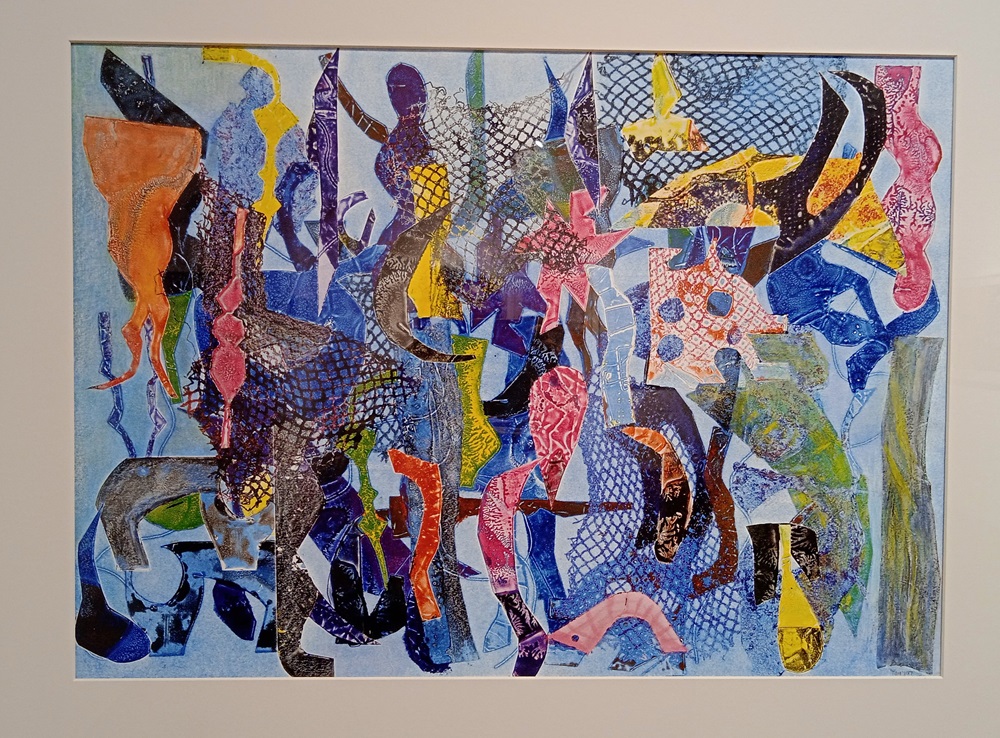
The rhythm of the universe that we do not always understand and the randomness and reflections of the realities and dreams we encounter make an abstract blend in Tara’s compositions. The most significant thing in Tara’s painting is the material use and the artistic practice brought into a canvas as a painting is a complex process and challenging to understand. The printmaker and painter artist Tara Sabharwal created this artwork; we can’t distinguish print from the images- what makes the abstract experience in this painting? The curator redirects us into Tara’s painted world as she journeys into the night forest, charting her way through healing, reflection, meditation, and contemplation.
In a note on the material process, Tara describes a monoprint derived from a printmaking workshop where the artist produced an oil-based monoprint in a large and busy community setting. Artists use many things to create abstract effects, including various textured fabrics, felt, aluminium foil, inkjet film and string, among others, to create a collagraph layer. After the complex process of making imprints and prints, the artist took that print into her studio and started work above the printed surface.

Krispin Joseph PX, a poet and journalist, completed an MFA in art history and visual studies at the University of Hyderabad.

